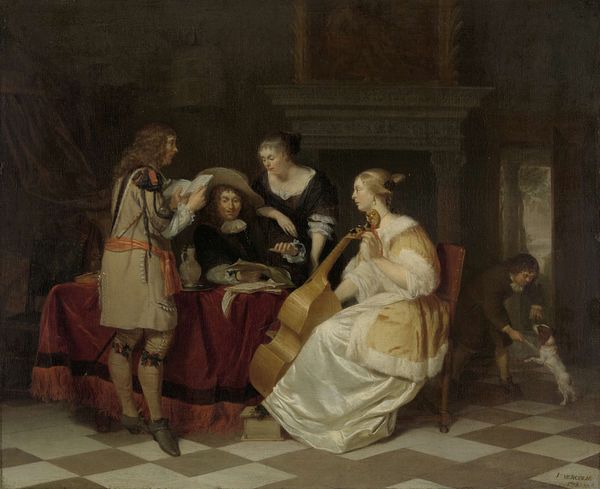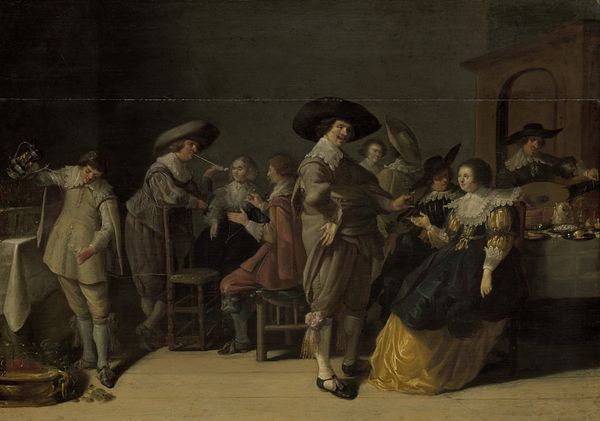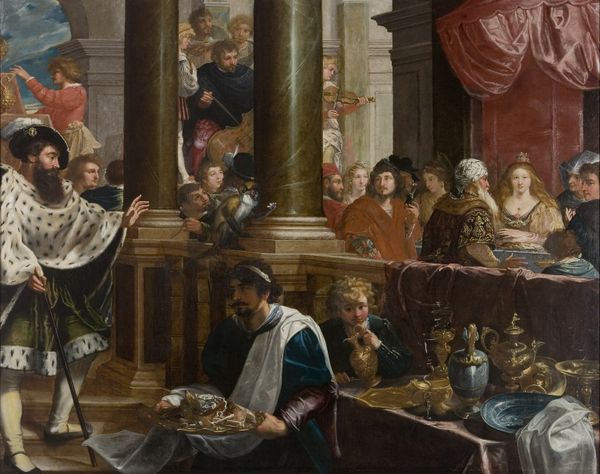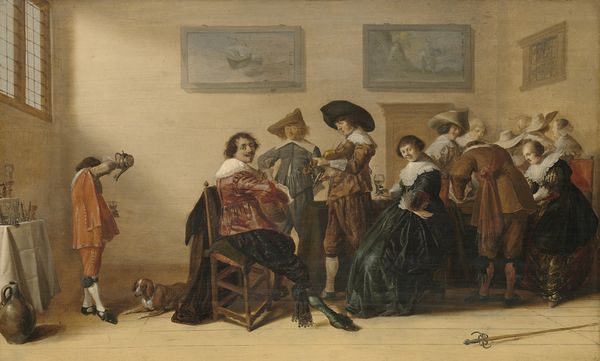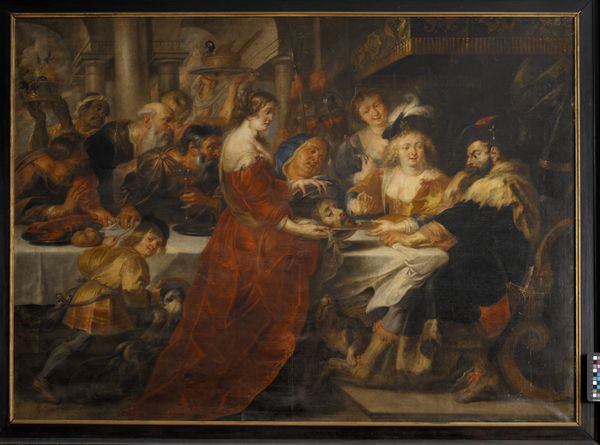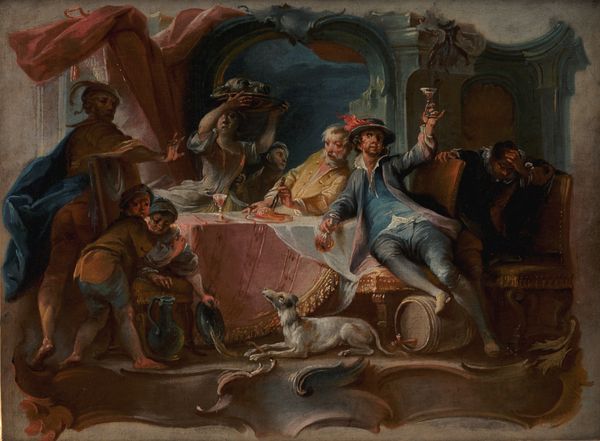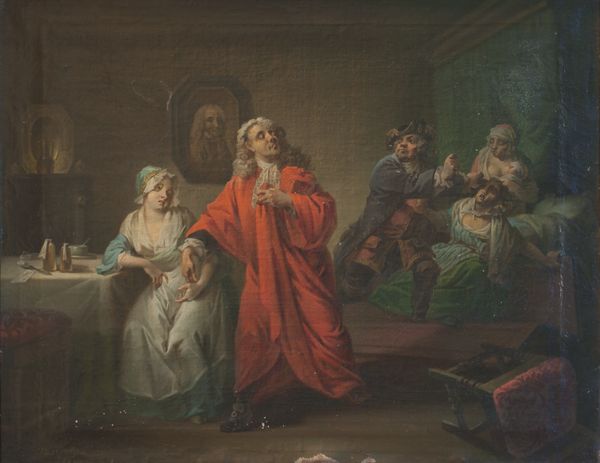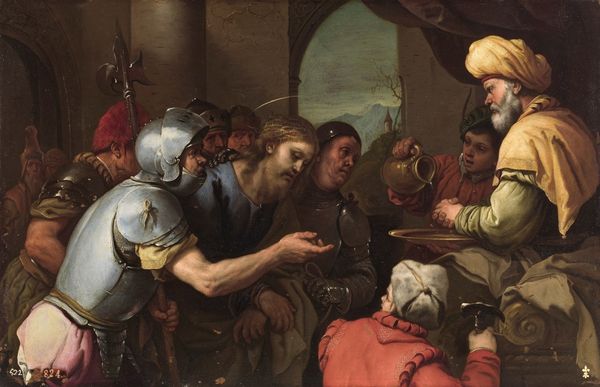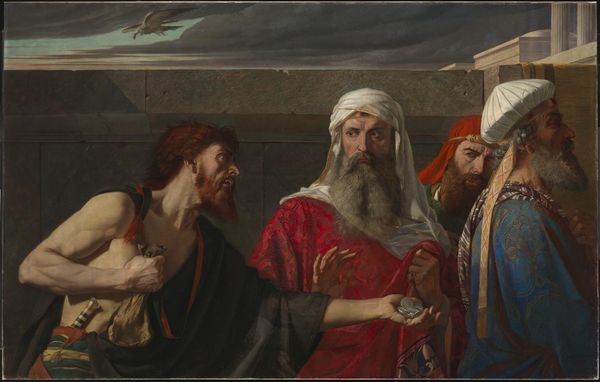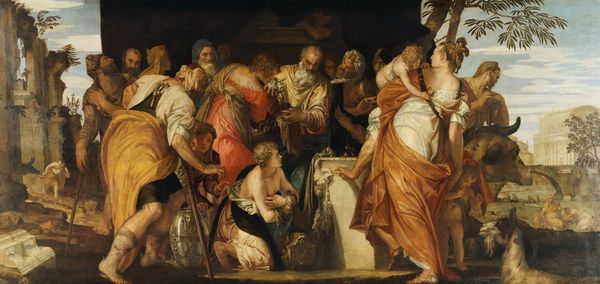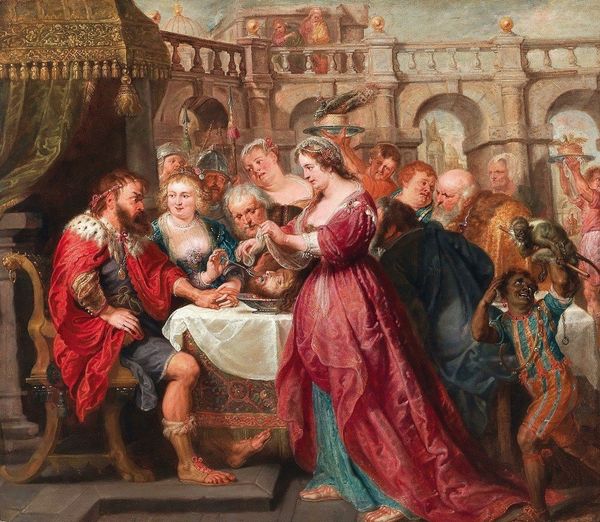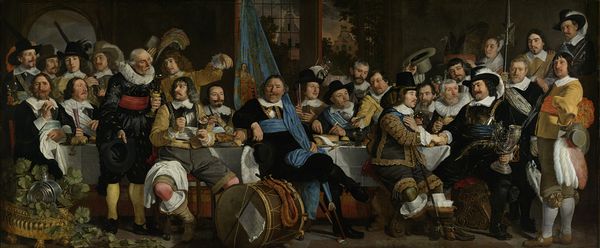
oil-paint
#
portrait
#
narrative-art
#
baroque
#
oil-paint
#
group-portraits
#
academic-art
Dimensions: height 100 cm, width 131 cm
Copyright: Rijks Museum: Open Domain
Curator: Oh, my god. Is that hair real? Seriously though, talk about baroque gone wild. Editor: This piece, attributed to the mysterious Monogrammist GF and titled "Groepsportret van vier kunstenaars" dates from around 1680. Painted with oils, it depicts… well, exactly what the title says. Curator: They're quite the crew. I imagine their studio must have been quite the scene. Do you think they argued over whose wig was best? More importantly, do you think their epic baroque wigs made their artistry better or worse? It's so hard to know when there is art imitating life—or life imitating art—I just find it so mesmerizing that they’re all huddled together analyzing a drawing! There is such joy and connection that just sparks from the piece. Editor: It is a striking composition, but to your point—how staged and performative is this camaraderie? Group portraits of artists became popular ways for guilds to present a united front, particularly when asserting their status and importance in society. Were they really so friendly, or were they enacting an idealized image? Curator: It's interesting, this notion of performing unity. Isn't all art a bit of performance though? When I create a new piece, I put a little bit of myself into it with some degree of 'acting.' Looking closer, I find a profound humanity in each of their expressions. Editor: And notice the architecture subtly placed in the background. It’s not just a backdrop, it is likely alluding to classical artistic and intellectual traditions that they would associate with, connecting themselves to that legacy and seeking to elevate their profession. Curator: Okay, true. Art world power moves, understood. Though, back to those expressions… There's also this quiet intensity in their eyes, a hunger for…what? Recognition? Another brushstroke? I do like the drama that plays here within the academic realm—so Baroque after all, and done so well. Editor: Indeed, this painting acts as a portal into understanding both artistic communities and cultural aspirations of that era. We see individual talent and the constructed identity of an artistic community that seeks lasting influence, while perhaps battling and questioning the role of artists' own identities. Curator: True words indeed! I leave this piece with a richer insight into that delicate balance between 'posing' and being authentic—such a compelling push and pull for us artists and human beings! Editor: Agreed, I found myself also reconsidering the artist's role and contribution to building and transforming the society from centuries ago, while the artwork remains a testament to the times when creativity became a political tool.
Comments
No comments
Be the first to comment and join the conversation on the ultimate creative platform.

